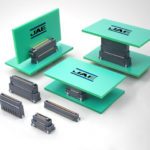The Importance of Value-Added Services and Manufacturing
In today’s competitive market, value-added service providers help manufacturers reduce costs and lead times, while increasing throughput.
 The term “value-added services” can encompass a wide range of services, depending on the individual company or industry. However, in every industry, companies that offer value-added services aim to decrease time-to-market, lower costs, and ultimately improve responsiveness, productivity, and throughput for their customers. Value-added connector and cable service providers enable manufacturers to deliver better, more complete products while ensuring a lean, profitable, and streamlined manufacturing process. In an environment where long-term relationships are critical to the success of every company involved in the supply chain, the products are only as good as the service and support that comes with them.
The term “value-added services” can encompass a wide range of services, depending on the individual company or industry. However, in every industry, companies that offer value-added services aim to decrease time-to-market, lower costs, and ultimately improve responsiveness, productivity, and throughput for their customers. Value-added connector and cable service providers enable manufacturers to deliver better, more complete products while ensuring a lean, profitable, and streamlined manufacturing process. In an environment where long-term relationships are critical to the success of every company involved in the supply chain, the products are only as good as the service and support that comes with them.
Simplifying Production
Several different types of companies provide value-added services, including original component manufacturers (OCMs), traditional distributors, specialty distributors, and value-added resellers (VARs). Depending upon the markets and applications they supply, these third-party value-added service providers can tailor programs to offer design, manufacturing, assembly, and installation services that simplify the supply chain and provide expertise to organizations that prefer to outsource specific skillsets and processes.
Design & Engineering
Third-party design and engineering teams can offer full-service support, ranging from concept sketches to fully documented engineering drawings to working prototypes. It is vital that design teams build for manufacturability. With all the variables involved in board, connectivity, and wire engineering, ease of manufacture is often overlooked. In addition, tier-one service providers can design for applications, which helps ensure that industry certifications and standards are met without compromising the integrity or function of an assembly.
Assembly
 Adding value beyond the component is vital, from packaging to connector assembly, and more. Once the basic specifications and requirements are established, issues such as types of connectors, wire, placement of cable ties and labels, and overall tolerances play an important role in determining the material costs, manufacturing costs, and long-term reliability of an assembly. Access to a fully automated SMT line with pressfit technology capability is a key asset for many value-added service providers seeking to reduce lead times. Companies like ERNI specialize in low- to mid-volume, high-mix PC board and sub-rack assembly. Automation typically translates to high-quality assemblies, particularly for connectors designed for rugged or demanding applications. Being able to process special board materials, board thicknesses, and board sizes is also a big benefit, especially for backplane applications.
Adding value beyond the component is vital, from packaging to connector assembly, and more. Once the basic specifications and requirements are established, issues such as types of connectors, wire, placement of cable ties and labels, and overall tolerances play an important role in determining the material costs, manufacturing costs, and long-term reliability of an assembly. Access to a fully automated SMT line with pressfit technology capability is a key asset for many value-added service providers seeking to reduce lead times. Companies like ERNI specialize in low- to mid-volume, high-mix PC board and sub-rack assembly. Automation typically translates to high-quality assemblies, particularly for connectors designed for rugged or demanding applications. Being able to process special board materials, board thicknesses, and board sizes is also a big benefit, especially for backplane applications.
Testing
 Once the backplane PC boards are fully assembled, they need to be tested. When we develop high-quality board assemblies for OEMs — including manufacturers of radar equipment, airplanes, drones, fire trucks, off-highway, and other military applications — testing contact points for electrical performance and solder joints for physical stability is imperative. This is a requirement for most end-users.
Once the backplane PC boards are fully assembled, they need to be tested. When we develop high-quality board assemblies for OEMs — including manufacturers of radar equipment, airplanes, drones, fire trucks, off-highway, and other military applications — testing contact points for electrical performance and solder joints for physical stability is imperative. This is a requirement for most end-users.
 Post-production X-ray inspection checks equipment to verify the quality of solder joints. Some value-added service providers offer 100% X-ray inspection in addition to proving out and setting up each production run. Some X-ray equipment has an extra heavy-duty gantry inspection capability for handling populated double-sided PC boards that are up to .287” thick. These thicker boards — primarily used for mil/aero, instrumentation, and industrial applications — can weigh more than 10 pounds each when populated.
Post-production X-ray inspection checks equipment to verify the quality of solder joints. Some value-added service providers offer 100% X-ray inspection in addition to proving out and setting up each production run. Some X-ray equipment has an extra heavy-duty gantry inspection capability for handling populated double-sided PC boards that are up to .287” thick. These thicker boards — primarily used for mil/aero, instrumentation, and industrial applications — can weigh more than 10 pounds each when populated.
Superior test stations offer 100% testing of every contact point on the board. This is an additional service offered beyond the normal visual inspection equipment provided by most CMS companies, which only inspects for bad solder joints, cracks, etc. Standard product validation (BOM checking) can be achieved through Automated Optical Inspection (AOI); however this does not always guarantee 100% electrical performance.
 For example, state-of-the-art RoBAT S1 inspection equipment electrically tests each connector contact point and every solder point. AOI, plus this kind of electrical testing, provides 100% Netlist test coverage. The RoBAT S1 tester simulates the daughter card that would plug into the backplane or motherboard. Test data is linked to each unique board serial number, fulfilling traceability requirements. The machine has tooling for testing all connector types.
For example, state-of-the-art RoBAT S1 inspection equipment electrically tests each connector contact point and every solder point. AOI, plus this kind of electrical testing, provides 100% Netlist test coverage. The RoBAT S1 tester simulates the daughter card that would plug into the backplane or motherboard. Test data is linked to each unique board serial number, fulfilling traceability requirements. The machine has tooling for testing all connector types.
It tests the contact point all the way through the connector to the backside of the board. A typical “bed of nails” test setup cannot accomplish this. Customers would pay more for a bed of nails testing solution, they would wait longer for the bed of nails tester to be built, and more layers of communication would be needed before the board could be made. The consequences of not catching a bad board, bad raw materials, or bad components are product line failures, or worse, bad product being delivered to the end customer.
Logistics
The globalization of sourcing and manufacturing has increased the complexity of manufacturing and distribution logistics, significantly impacting the types of value-added services customers want from third-party logistics providers. Material handling, assembly, packaging, inventory control/consignment inventory, component management, and bill of materials analysis are all services customers are seeking. The market is continuously pushing value-added service providers to do more in terms of logistics, leading many third-party providers to further commoditize logistical services into an integrated, end-to-end solution.
Conclusion
In today’s competitive market, value-added service providers help manufacturers reduce costs and lead times, while increasing throughput. Value-added service providers can simplify board designs and wire engineering, providing a complete connectivity solution. In addition to design support, value-added service providers can deliver quick-turn manufacturing, assembly, installation, test, certification, and logistical support services to reduce costs and simplify the manufacturing process.
Author Jason Roe is president at ERNI Electronics.
Recently added:
[related_posts limit=”7″]








